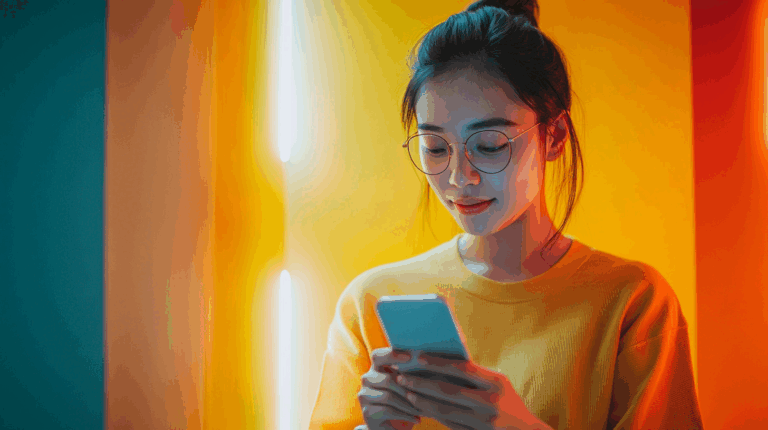Creative Stagnation is the Biggest Threat to B2B Advertising Success
What if everything you thought you knew about B2B advertising was wrong? New research suggests that the ‘safe’ approach many B2B marketers rely on might actually be the riskiest strategy of all.
Online advertising for B2B brands often follows a predictable formula: focus on features and functionality, emphasise ROI, and maintain a professional tone. This approach, rooted in the belief that B2B decisions are purely rational and driven more by logic and data than emotion, has long been considered effective for reaching business decision-makers.
Given the high stakes involved in B2B purchasing decisions, caution is understandable. However, The B2B Renaissance report from LinkedIn and MAGNA Media Trials, suggests that conventional wisdom may be outdated and even potentially harmful to your marketing campaigns.
The study, which surveyed 1700 participants to quantify the drivers of B2B ad performance, has revealed a disconnect between current B2B advertising practices and what decision-makers actually respond to.
Sign up for our newsletter
Get the latest news and ideas from 1827 Marketing sent directly to your in-box.
You will receive an email from us every couple of months, and you can opt out at any time.
The Risk of Playing It Safe
Here’s why the conventional approach to B2B advertising may actually be the riskiest strategy in today’s market.
Audience Indifference
When ads consistently lack creativity and emotional appeal, they fail to capture and hold attention. In a world where business decision-makers are bombarded with information, bland advertising simply has no impact.
Difficulty Standing Out
In a market where most competitors focus on similar features and benefits, differentiation becomes increasingly challenging. Without a creative edge, B2B brands struggle to distinguish themselves from the competition and fade into the background.
Long-term Brand Erosion
When brand differentiation is increasingly important, even in B2B contexts, failing to create memorable, emotionally resonant advertising could lead to brand erosion over time.
In other words, while the risks of taking a more creative approach to your advertising may seem daunting, the risk of not being creative is far greater.
The Creative Advantage
If you’re afraid that more creative advertising might be seen as unprofessional or irrelevant by your target audience, think again.
The B2B Renaissance report paints a picture of an advertising landscape that is largely uninspiring and forgettable. And that runs contrary to what the audience wants to see.
It shows that business decision-makers are largely underwhelmed by the B2B ads they typically encounter. Despite stating that more creative ads would drive their interest and action, 64% of respondents said they rarely saw B2B ads with emotional appeal or humour. Similarly, 60% said ads lacked characters they can connect with, and 59% said ads failed to offer a unique perspective.
This gives businesses a bigger problem than audience indifference. Creativity is not just a matter of personal preference. In fact, the report provides compelling evidence that B2B decision-makers respond better to ads they perceive to be more creative, resulting in higher view times (+24 seconds) and more likes (+21).
And that translates into improved performance across a range of metrics:
- 15% increase in brand connection
- 23% increase in brand preference
- 34% increase in research intent
- 40% increase in purchase consideration
These are not marginal gains. By playing it safe, B2B advertisers are leaving substantial opportunities to drive engagement, consideration, and ultimately, sales on the table.
What Makes B2B Ads Stand Out?
The report also sheds light on what constitutes “creative” in the eyes of B2B decision-makers. Humour, good visuals and colours, innovative use of technology (like AI), diversity, strategic partnerships, and even the presence of animals were all cited as elements that made B2B ads stand out as creative.
Emotional Appeal
Contrary to conventional B2B marketing wisdom, emotional elements play a significant role in ad effectiveness. Ads with emotional appeal drive stronger brand connections and higher purchase consideration.
This could mean ads that inspire, create a sense of belonging, or tap into professional aspirations. For instance, you might focus on the pride and accomplishment your customers feel after successfully implementing your solution, or the relief and confidence they experience knowing their business challenges are being addressed.
Storytelling
Strong narratives emerged as a key driver of ad effectiveness, particularly for prospective customers where building brand familiarity and affinity is crucial. This suggests that B2B buyers are looking for more than just facts and figures. They want to contextualise products and services with relatable scenarios that illustrate how solutions work in real-world situations.
Consider crafting narratives that follow a customer’s journey from problem to solution, highlighting the challenges they faced and how your product or service made a tangible difference. By weaving your brand into a compelling narrative, you can help potential clients envision how your solution could fit into their own business success story .
Unique Perspective
Ads that offer a fresh viewpoint or innovative approach tend to perform better, helping brands stand out in a crowded market. This could involve challenging industry norms or presenting familiar problems in new ways, demonstrating thought leadership and innovation.
The key is to provoke thought and spark curiosity. By positioning your brand as a thought leader with unique insights, you can capture attention and differentiate yourself from competitors who are simply repeating the same old messages.
Humour
The report highlights humour as an element that can make B2B ads stand out. When used appropriately, humour can make complex B2B topics more approachable, relatable and memorable, helping to forge a stronger connection with the target audience.
However, it’s crucial to strike the right tone and this can often be a tricky balancing act. Test your humorous content before launching a full campaign to ensure it hits the mark and doesn’t undermine your brand’s credibility.
Visual Appeal
Good visuals and colours were identified as key factors in creative B2B advertising. Striking imagery and thoughtful colour choices can significantly enhance ad performance, improving brand recall and making your ads more instantly recognisable to your target audience when consistently applied.
Consider how your visual elements can tell a story at a glance, complementing your written message. In practice, this might involve using bold, on-brand colours to stand out in crowded digital spaces, or leveraging high-quality photography, infographics, and illustrations to convey complex ideas simply.
Strategic Partnerships
Highlighting strategic partnerships was noted as a creative approach in B2B advertising. This can lend credibility to a brand and demonstrate its ability to provide comprehensive solutions, potentially increasing trust among potential clients. Consider showcasing joint case studies, co-branded content, or integrated product demonstrations in your ads.
When featuring partnerships, focus on the synergistic benefits that the collaboration brings to your customers. This approach not only showcases your expanded capabilities but also positions your brand as well-connected and innovative within your industry.

Executing the Creative Shift
The report’s findings challenge the notion that B2B advertising needs to be strictly professional and feature-focused to be effective. They suggest that there’s significant room for creativity and emotional appeal in B2B advertising.
But while increased creativity can drive significant improvements in ad performance, it needs to be applied strategically, with careful consideration of the target audience, campaign objectives, and core message.
Balance Creativity with Clarity
While creative elements can significantly boost ad performance, it cannot come at the expense of message clarity .The most effective B2B ads balance creativity with a clear, easily understood core message. In fact, B2B ads are 29% less effective if they don’t have a clear message.
Prioritise Your Core Message
Begin your creative process by identifying the single most important takeaway for your intended audience. This should be the foundation upon which your creative elements are built.
Tailor Creativity to Your Audience
What’s considered “creative” can vary by industry and audience. A playful approach that works for a tech startup might not resonate with a conservative financial institution.
Use Creativity to Amplify, Not Obscure
Creative elements should serve to make your core message more memorable or impactful, not compete with it. For example, if using humour, ensure the joke reinforces your key point rather than distracting from it.
Test for Comprehension
Before launching a creative campaign, conduct tests to ensure the core message is still clear and compelling amidst the creative execution.
Maintain Brand Consistency
While pushing creative boundaries, ensure that your ads remain aligned with your overall brand identity and values .Creativity should enhance, not detract from, your brand’s core message.
Remember, in B2B advertising, the goal is not just to be memorable, but to be memorable for the right reasons. Your creative approach should always serve the ultimate objective of communicating your value proposition clearly and compellingly to your target audience.
Play With Formats
The report found that both display and video B2B ads work to improve brand opinions and drive consideration. Both increased brand KPIs like favourability, intent and purchase consideration.
Video ads, in particular, show slightly higher lifts across all metrics, likely due to their engaging and immersive nature. They offer an opportunity to tell a more complex brand story or demonstrate product features in action.
Consider how different ad types can work in concert throughout the buyer’s journey. For example, you might use video for brand awareness and storytelling, and deploy display ads for consistent visibility and reinforcement of key messages. You can also retarget engaged viewers of your video campaigns with more specific display ads to drive consideration.
Tailor Your Approach
The report found that the effectiveness of different ad elements varies depending on the target audience and campaign objectives.
This distinction is crucial. It shows that while embracing creativity can be highly effective, a one-size-fits-all creative strategy won’t yield optimal results. You need to tailor your approach:
To Your Audience
The research showed that for prospective customers (those who haven’t purchased from the brand before), ads with “refreshing content” and “strong storytelling” work best. However, for existing customers, message clarity and a clear call-to-action were more important.
Based on Your Desired Outcome
Different creative elements also drive different outcomes. For short-term objectives like driving research intent, the report suggests prioritising clear and memorable messaging.
For longer-term goals, like building brand connection or favourability, emotional appeal and sharing a unique perspective are more effective. 44% of B2B decision makers said a unique perspective was their top driver of feeling connected to a brand, making it more than two times as important as humour.
In other words, you need to consider the full customer journey when planning your creative campaigns. Creative elements might be more effective at the top of the funnel, driving awareness and interest. However, as prospects get closer to a deal, the balance needs to shift more towards clearer, action-oriented messaging.
Humanise Your Advertising
Look for authentic ways to incorporate human presence in your advertising. Ads featuring a relatable human presence showed notable improvements across various metrics. They drove a 10% increase in unaided recall, an 8% increase in brand connection, and a 5% increase in purchase consideration.
The good news is that better performance doesn’t come with bigger personalities. Celebrity presence in ads didn’t significantly impact performance. This suggests B2B audiences respond just as well to relatable figures, whether they’re employees, customers, or industry professionals, than to famous faces.
When incorporating human presence in your ads, it’s crucial to ensure alignment with your target audience. Choose representatives who reflect the demographics, roles, and challenges of your ideal customers. A more targeted approach enhances relatability and credibility, making your ad more likely to resonate with the specific decision-makers you’re trying to reach. It also demonstrates an authentic understanding of your audience’s unique perspective and needs.
Experiment and Iterate
Introducing more creative elements into B2B advertising may require some trial and error. You don’t need to abandon proven strategies overnight. Instead, work on a thoughtful evolution of your advertising campaigns.
Start by auditing what’s working and what isn’t. Then, identify opportunities to inject creativity without sacrificing clarity. Test these more creative approaches against your standard ads, introducing new elements and closely monitoring performance across various metrics. Leave room to refine and iterate your approach based on the results.
When evaluating the performance of more creative ads, look beyond immediate conversion metrics. Consider factors like brand recall, emotional response, and long-term brand perceptions. This data-driven approach will help you find the right balance between creativity and functionality for your specific audience and objectives.
Take Your Ads From Safe to Standout
The B2B Renaissance report reveals a stark truth: what we’ve long considered “safe” in B2B advertising fails to deliver on what connects with decision-makers. That makes creative stagnation the riskiest strategy of all.
This isn’t just about making prettier ads. It’s about fundamentally rethinking how we connect with B2B decision-makers. You need to do more than just inform and persuade.You need to inspire and connect.
At its heart, and as obvious as it sounds, it’s about recognising that your B2B buyers are people .And those people respond to stories, emotions, and new ideas. The most successful marketers will be those who can seamlessly blend creativity with clarity, emotion with logic, and short-term performance with long-term brand building.
In a world where the old rules no longer apply, can you afford to be left behind? At 1827 Marketing, we can help you to demystify what connects with your audience. To learn how to deliver more creative campaigns that also deliver measurable ROI, get in touch .
Have a B2B marketing project in mind?
We might be just what you’re looking for






